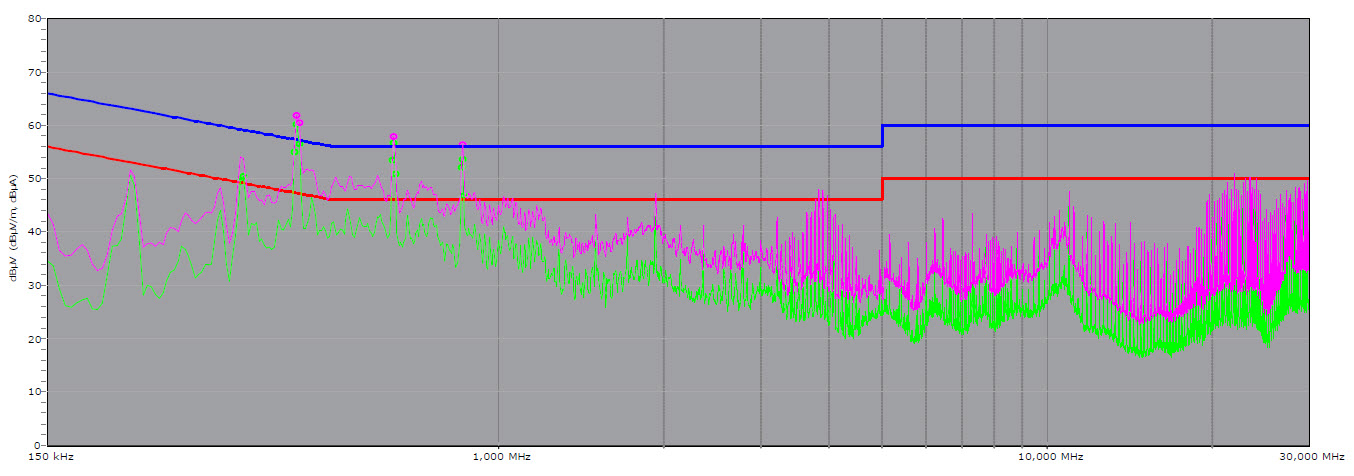Why you can trust Tom's Hardware
Advanced Transient Response Tests
For details about our transient response testing, please click here.
In the real world, power supplies are always working with loads that change. It's of immense importance, then, for the PSU to keep its rails within the ATX specification's defined ranges. The smaller the deviations, the more stable your PC will be with less stress applied to its components.
We should note that the ATX spec requires capacitive loading during the transient rests, but in our methodology, we also choose to apply a worst case scenario with no additional capacitance on the rails.
Advanced Transient Response at 20% – 20ms
| Voltage | Before | After | Change | Pass/Fail |
|---|---|---|---|---|
| 12V | 12.050V | 11.907V | 1.19% | Pass |
| 5V | 5.026V | 4.957V | 1.37% | Pass |
| 3.3V | 3.327V | 3.237V | 2.71% | Pass |
| 5VSB | 5.067V | 5.012V | 1.09% | Pass |
Advanced Transient Response at 20% – 10ms
| Voltage | Before | After | Change | Pass/Fail |
|---|---|---|---|---|
| 12V | 12.055V | 11.928V | 1.05% | Pass |
| 5V | 5.026V | 4.953V | 1.45% | Pass |
| 3.3V | 3.327V | 3.238V | 2.68% | Pass |
| 5VSB | 5.068V | 5.009V | 1.16% | Pass |
Advanced Transient Response at 20% – 1ms
| Voltage | Before | After | Change | Pass/Fail |
|---|---|---|---|---|
| 12V | 12.055V | 11.942V | 0.94% | Pass |
| 5V | 5.027V | 4.958V | 1.37% | Pass |
| 3.3V | 3.327V | 3.241V | 2.58% | Pass |
| 5VSB | 5.069V | 5.029V | 0.79% | Pass |
Advanced Transient Response at 50% – 20ms
| Voltage | Before | After | Change | Pass/Fail |
|---|---|---|---|---|
| 12V | 12.042V | 11.938V | 0.86% | Pass |
| 5V | 5.017V | 4.943V | 1.47% | Pass |
| 3.3V | 3.320V | 3.227V | 2.80% | Pass |
| 5VSB | 5.014V | 4.963V | 1.02% | Pass |
Advanced Transient Response at 50% – 10ms
| Voltage | Before | After | Change | Pass/Fail |
|---|---|---|---|---|
| 12V | 12.047V | 11.944V | 0.85% | Pass |
| 5V | 5.017V | 4.944V | 1.46% | Pass |
| 3.3V | 3.319V | 3.225V | 2.83% | Pass |
| 5VSB | 5.016V | 4.975V | 0.82% | Pass |
Advanced Transient Response at 50% – 1ms
| Voltage | Before | After | Change | Pass/Fail |
|---|---|---|---|---|
| 12V | 12.047V | 11.936V | 0.92% | Pass |
| 5V | 5.018V | 4.943V | 1.49% | Pass |
| 3.3V | 3.320V | 3.233V | 2.62% | Pass |
| 5VSB | 5.015V | 4.980V | 0.70% | Pass |

Results 25-29: Transient Response

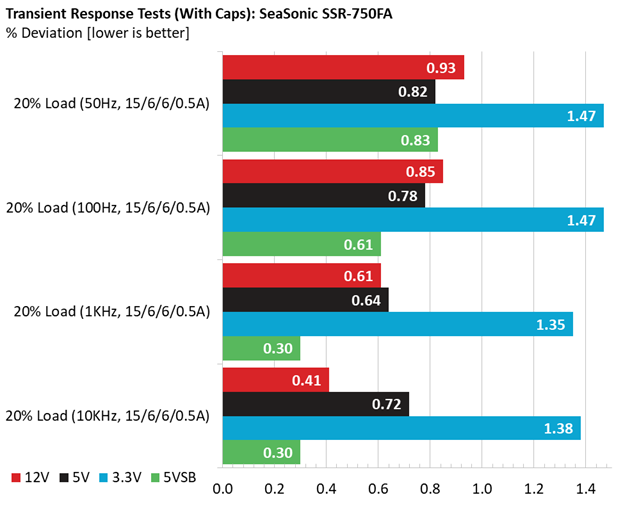
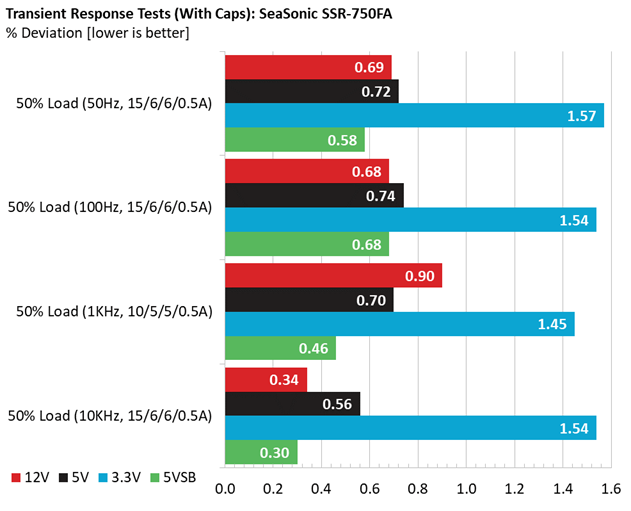
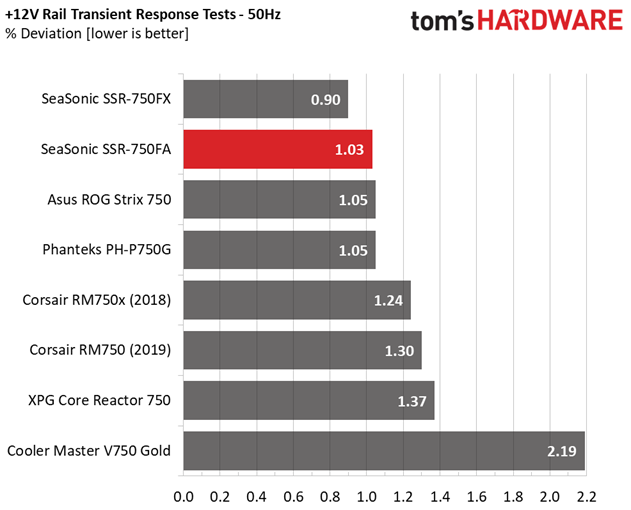
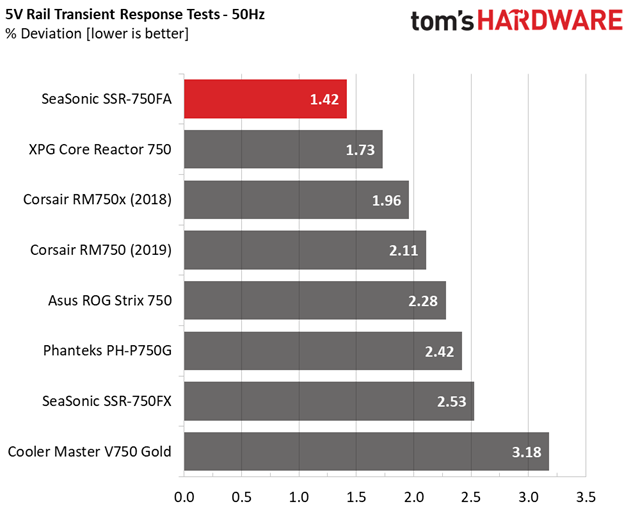


The transient response is good on all rails.
Turn-On Transient Tests
In the next set of tests, we measure the PSU's response in simpler transient load scenarios—during its power-on phase. Ideally, we don't want to see any voltage overshoots or spikes since those put a lot of stress on the DC-DC converters of installed components.

Turn-On Transient Response Scope Shots
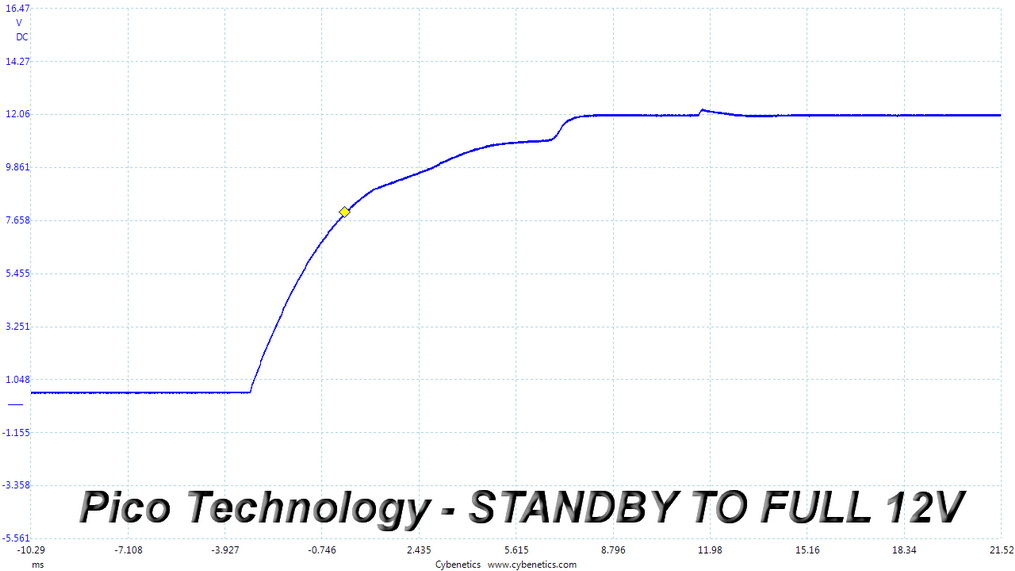
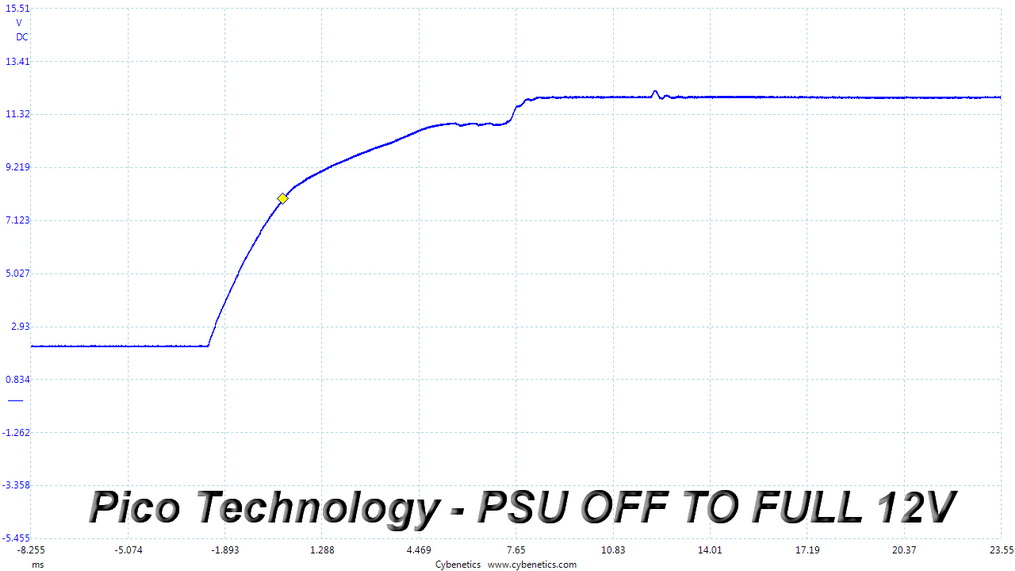
There is a small voltage overshoot at 5VSB and a voltage step at +12V, which is nothing to worry about.
Power Supply Timing Tests
There are several signals generated by the power supply, which need to be within specified, by the ATX spec, ranges. If they are not, there can be compatibility issues with other system parts, especially mainboards. From year 2020, the PSU's Power-on time (T1) has to be lower than 150ms and the PWR_OK delay (T3) from 100 to 150ms, to be compatible with the Alternative Sleep Mode.
Get Tom's Hardware's best news and in-depth reviews, straight to your inbox.
| T1 (Power-on time) & T3 (PWR_OK delay) | ||
|---|---|---|
| Load | T1 | T3 |
| 20% | 78ms | 314ms |
| 50% | 90ms | 314ms |
The PWR_OK delay is out of the 100-150ms region, so the PSU does not support the alternative sleep mode, which is recommended by the ATX spec.
Ripple Measurements
Ripple represent the AC fluctuations (periodic) and noise (random) found in the PSU's DC rails. This phenomenon significantly decreases the capacitors' lifespan because it causes them to run hotter. A 10-degree Celsius increase can cut into a cap's useful life by 50%. Ripple also plays an important role in overall system stability, especially when overclocking is involved.
The ripple limits, according to the ATX specification, are 120mV (+12V) and 50mV (5V, 3.3V, and 5VSB).
| Test | 12V | 5V | 3.3V | 5VSB | Pass/Fail |
| 10% Load | 8.4 mV | 7.5 mV | 15.1 mV | 5.1 mV | Pass |
| 20% Load | 12.2 mV | 7.6 mV | 15.7 mV | 5.3 mV | Pass |
| 30% Load | 14.2 mV | 7.6 mV | 15.8 mV | 5.3 mV | Pass |
| 40% Load | 15.4 mV | 7.6 mV | 15.5 mV | 5.6 mV | Pass |
| 50% Load | 12.3 mV | 7.8 mV | 15.8 mV | 6.0 mV | Pass |
| 60% Load | 11.0 mV | 8.2 mV | 17.0 mV | 6.0 mV | Pass |
| 70% Load | 12.0 mV | 8.5 mV | 16.2 mV | 6.1 mV | Pass |
| 80% Load | 12.7 mV | 9.2 mV | 17.0 mV | 8.8 mV | Pass |
| 90% Load | 13.4 mV | 9.4 mV | 17.0 mV | 9.2 mV | Pass |
| 100% Load | 20.8 mV | 10.1 mV | 18.0 mV | 9.5 mV | Pass |
| 110% Load | 22.4 mV | 10.4 mV | 20.4 mV | 9.5 mV | Pass |
| Crossload 1 | 19.4 mV | 11.0 mV | 19.0 mV | 7.9 mV | Pass |
| Crossload 2 | 18.0 mV | 8.4 mV | 15.9 mV | 7.8 mV | Pass |
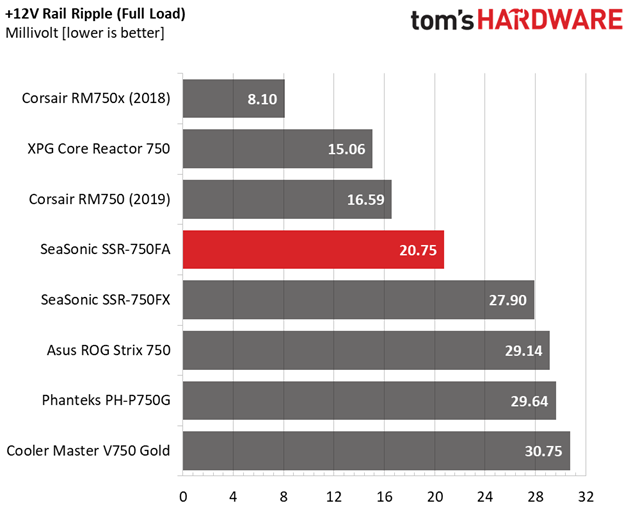
Results 30-33: Ripple Suppression
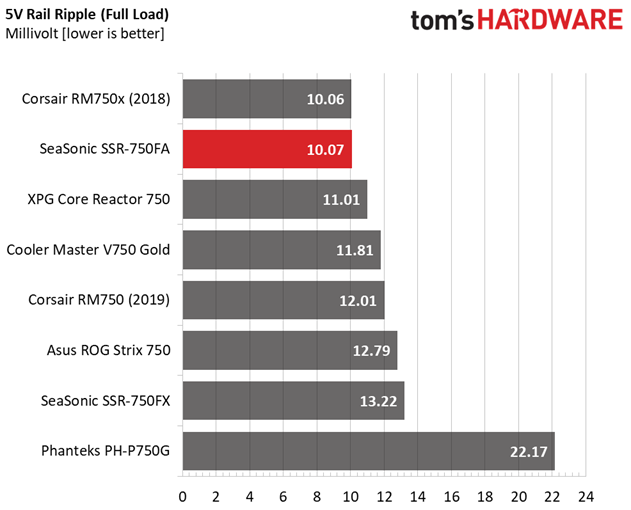


The ripple suppression is good on all rails. Still, it cannot reach the amazing performance of the RM750x, which uses extra caps on its cables, though.
Ripple At Full Load
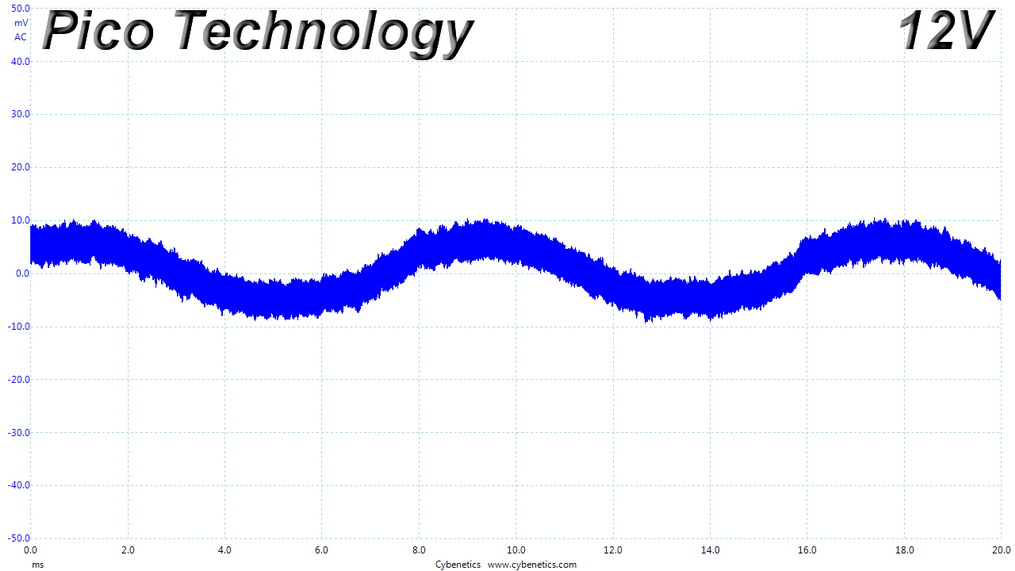
Ripple Full Load Scope Shots
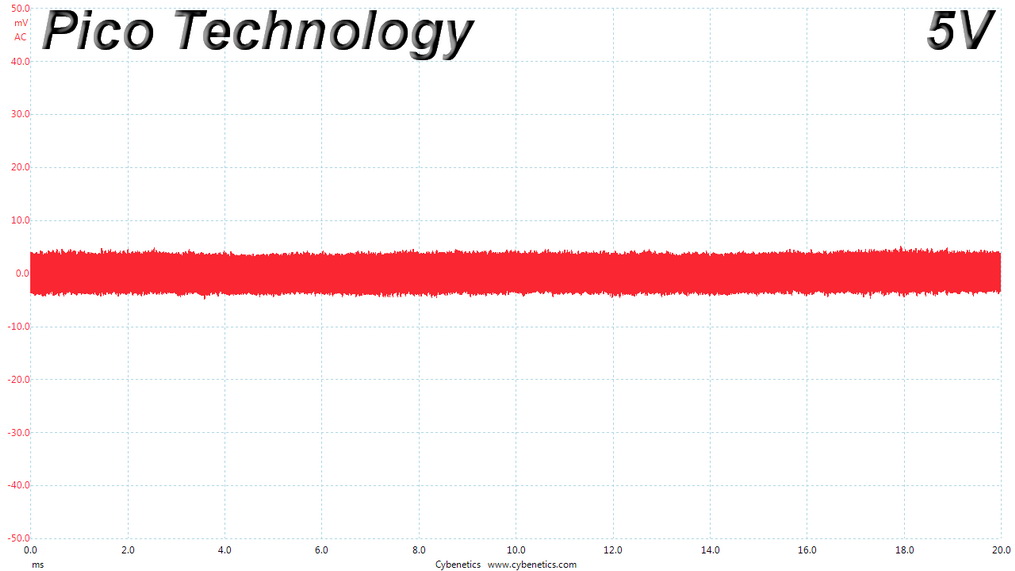
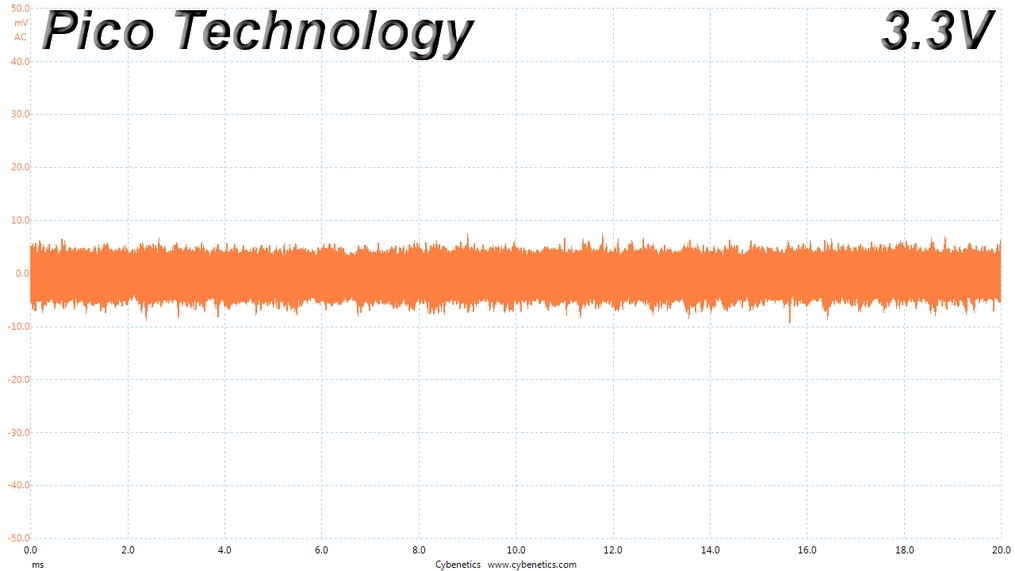

Ripple At 110% Load
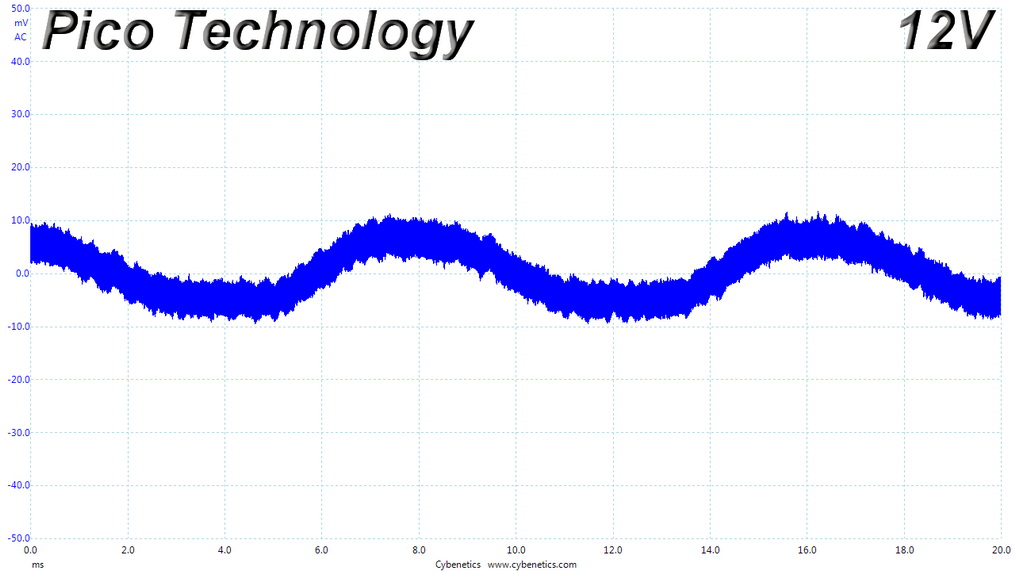
Ripple 110% Load Scope Shots


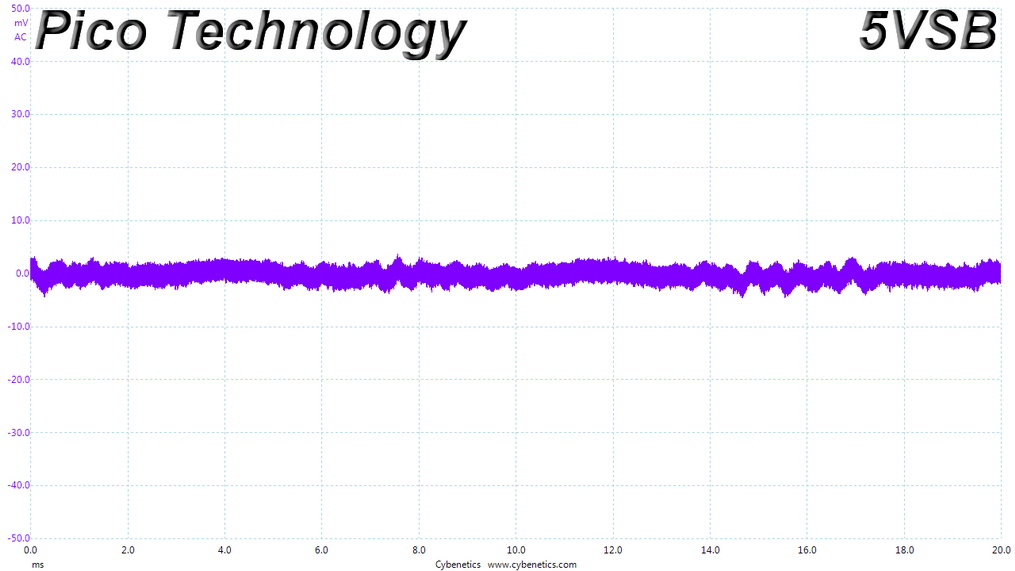
Ripple At Cross-Load 1
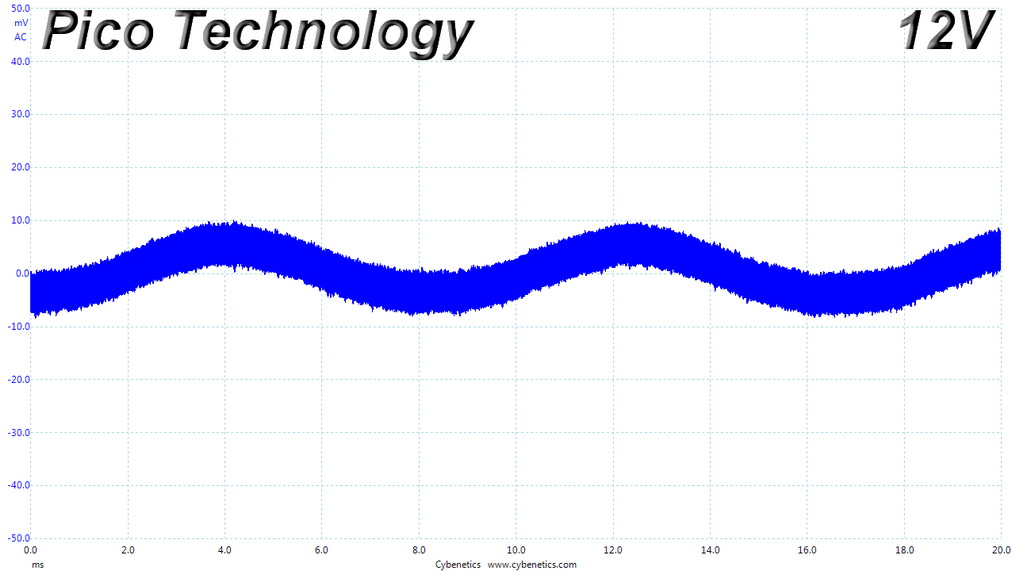
Ripple CL1 Load Scope Shots


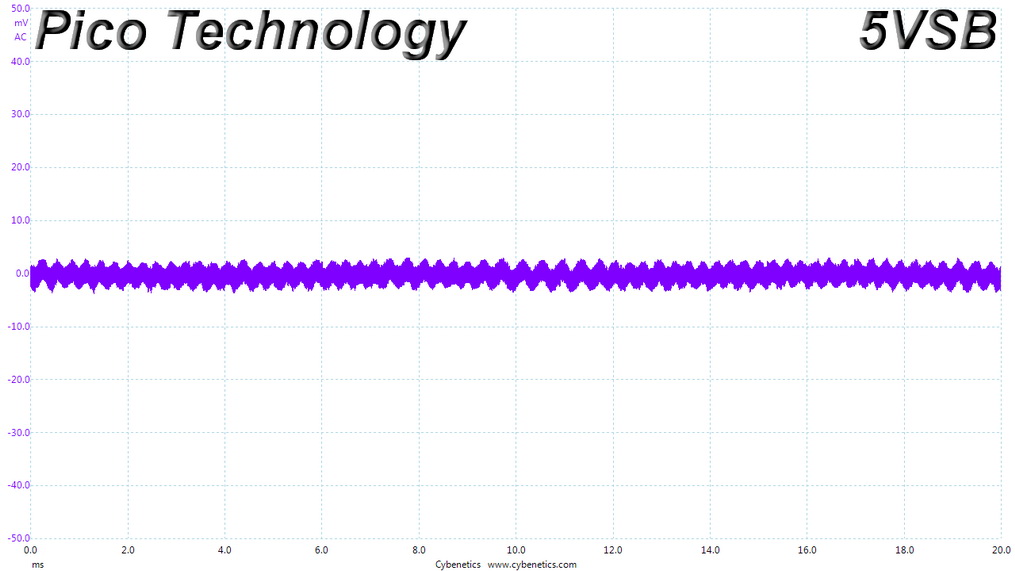
Ripple At Cross-Load 2
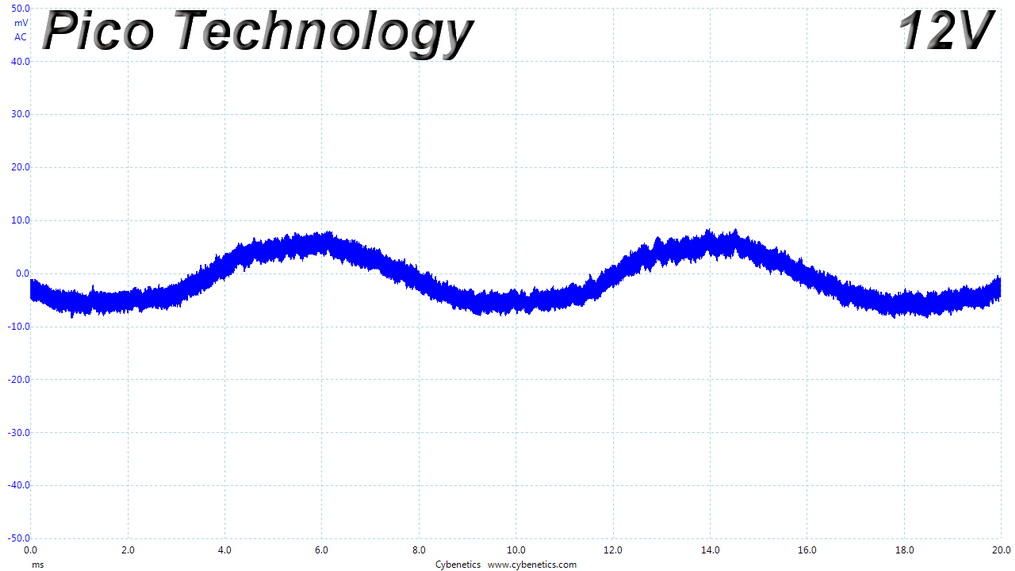
Ripple CL2 Load Scope Shots
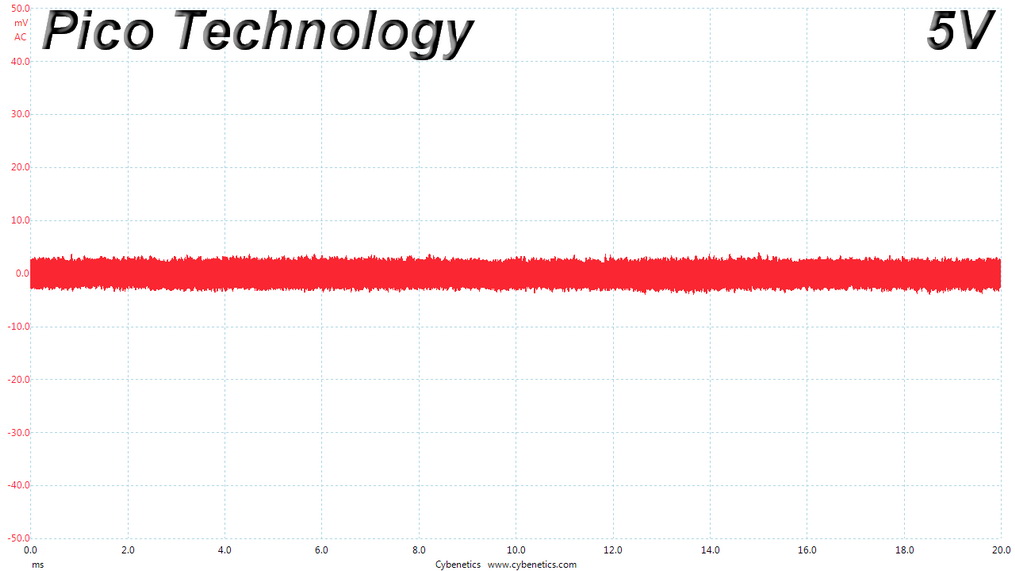
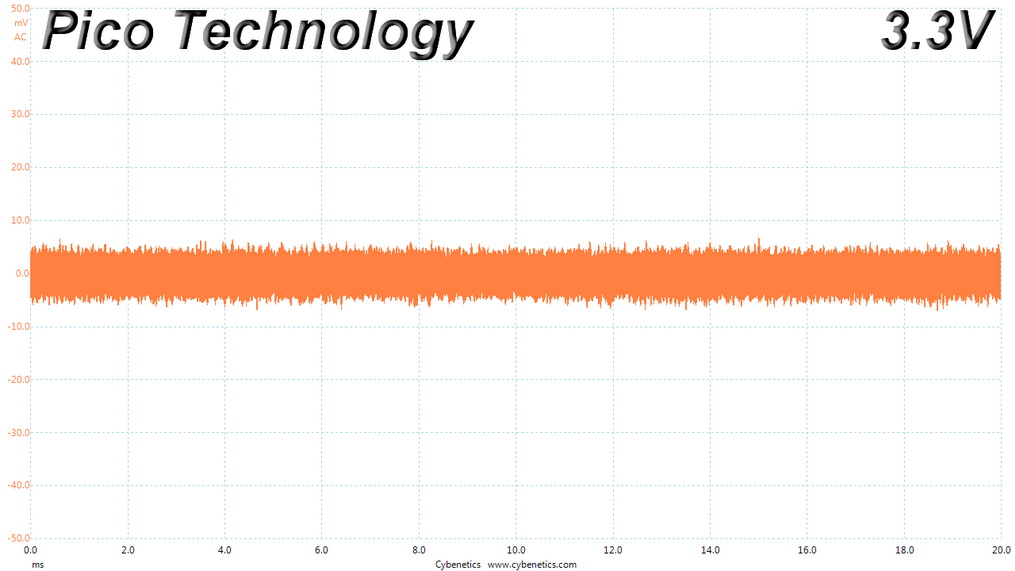
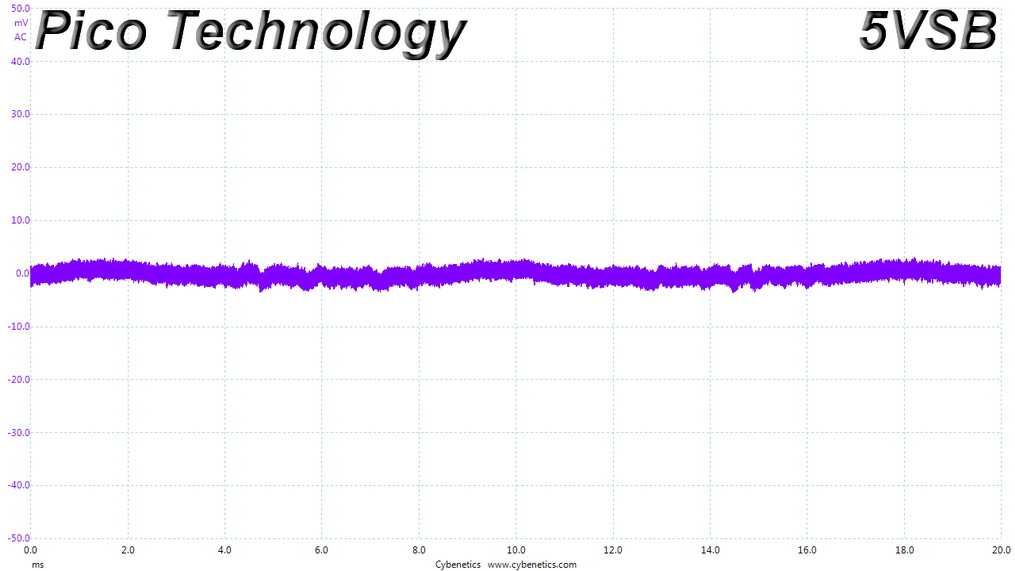
EMC Pre-Compliance Testing – Average & Quasi-Peak EMI Detector Results
Electromagnetic Compatibility (EMC) is the ability of a device to operate properly in its environment without disrupting the proper operation of other nearby devices.
Electromagnetic Interference (EMI) stands for the electromagnetic energy a device emits, and it can cause problems in other nearby devices if too high. For example, it can be the cause of increased static noise in your headphones or/and speakers.
With the average EMI detector, we found eleven spurs that go over the limits, while with the much more QP detector, we measured four spikes, at 428, 432, 643, and 859 kHz. The EMI filter needs improvements.
MORE: Best Power Supplies
MORE: How We Test Power Supplies
MORE: All Power Supply Content
Current page: Transient Response Tests, Timing Tests, Ripple Measurements and EMC Pre-Compliance Testing
Prev Page Protection Features, DC Power Sequencing, Cross-Load Tests and Infrared Images Next Page Performance, Noise and Efficiency
Aris Mpitziopoulos is a contributing editor at Tom's Hardware, covering PSUs.
-
Math Geek i missed this one some how before it was released. but i like the idea and do hope we get more and more of these. is a solution to something i never even thought of as a problem, but now can't imagine doing without!!Reply -
bit_user Thanks for the thorough and comprehensive review, Aris!Reply
I don't have a problem with their existing modular setup. I have 3 Seasonic modular PSUs (and one semi-modular) and have swapped two of them between machines, on a couple occasions. It was very nice to be able to swap PSUs without having to unplug, reroute, and reconnect the cables from everything - just disconnect them at the PSU end. I also like being able to borrow cables that came with one PSU to use with another.
With that said, I would use this style of setup under two conditions:
Actual PSU performance should equal or exceed their conventional models.
Cable compatibility should be retained with their existing modular PSUs.
Otherwise, I'll just stick with what's been working just fine for me, as long as they continue to be available.
